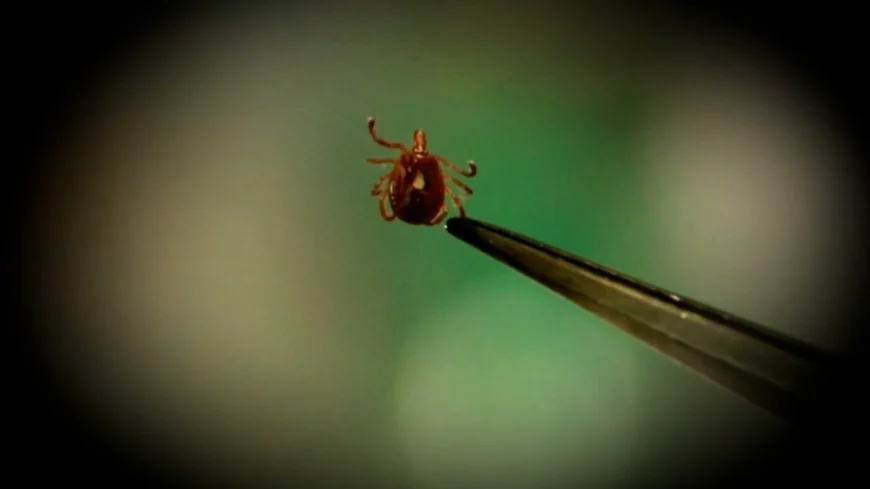Tick season is here, expert gives advice on how to avoid nasty bites

CHESTERFIELD COUNTY, Va. (WRIC) -- As the weather warms and outdoor activities increase, it's crucial to be aware of ticks as peak season is now underway.
Jory Brinkerhoff, a disease ecologist who researches ticks at the University of Richmond, said the most prevalent tick in the Central Virginia region is the "lone star tick."
Brinkerhoff described the adult females as having "a bronze brownish color, with a white spot on the back." These ticks can be found in thousands of ticks.

Adult female lone star tick
While lone star ticks don't transmit Lyme disease, they can carry other bacterial infections you want to avoid. Lone stars have been thought to be the possible cause of Alpha-gal syndrome, which can make people allergic to meat as well as other mammalian products, like dairy.
The deer tick, or blacklegged tick, which is known to transmit Lyme disease, is less common in Central Virginia.
Contrary to popular belief, Brinkerhoff said ticks typically do not fall from trees.
"They're on the ground," Brinkerhoff said. "They don't jump. They, frankly, don't move that fast. Most of these ticks pretty much sit and wait for some warm-blooded mammal to go by."
Beyond wearing light, long sleeve clothing, healthcare providers strongly recommend using insect repellent on both yourself and your pets before heading outdoors.
Upon returning inside, it's essential to conduct a thorough check of your body, paying close attention to areas like under your arms and behind your knees.
"You really want to make sure you find them before they have had a chance to bite and start feeding," Brinkerhoff said.
If you do find a tick attached to your skin, it's important to remove it properly.
Use a pair of tweezers to grasp the tick as close to the skin's surface as possible, near the head. Then, pull straight up with steady, even pressure. If you are uncomfortable removing the tick yourself, don't hesitate to contact your doctor for assistance.

 VENN
VENN 





